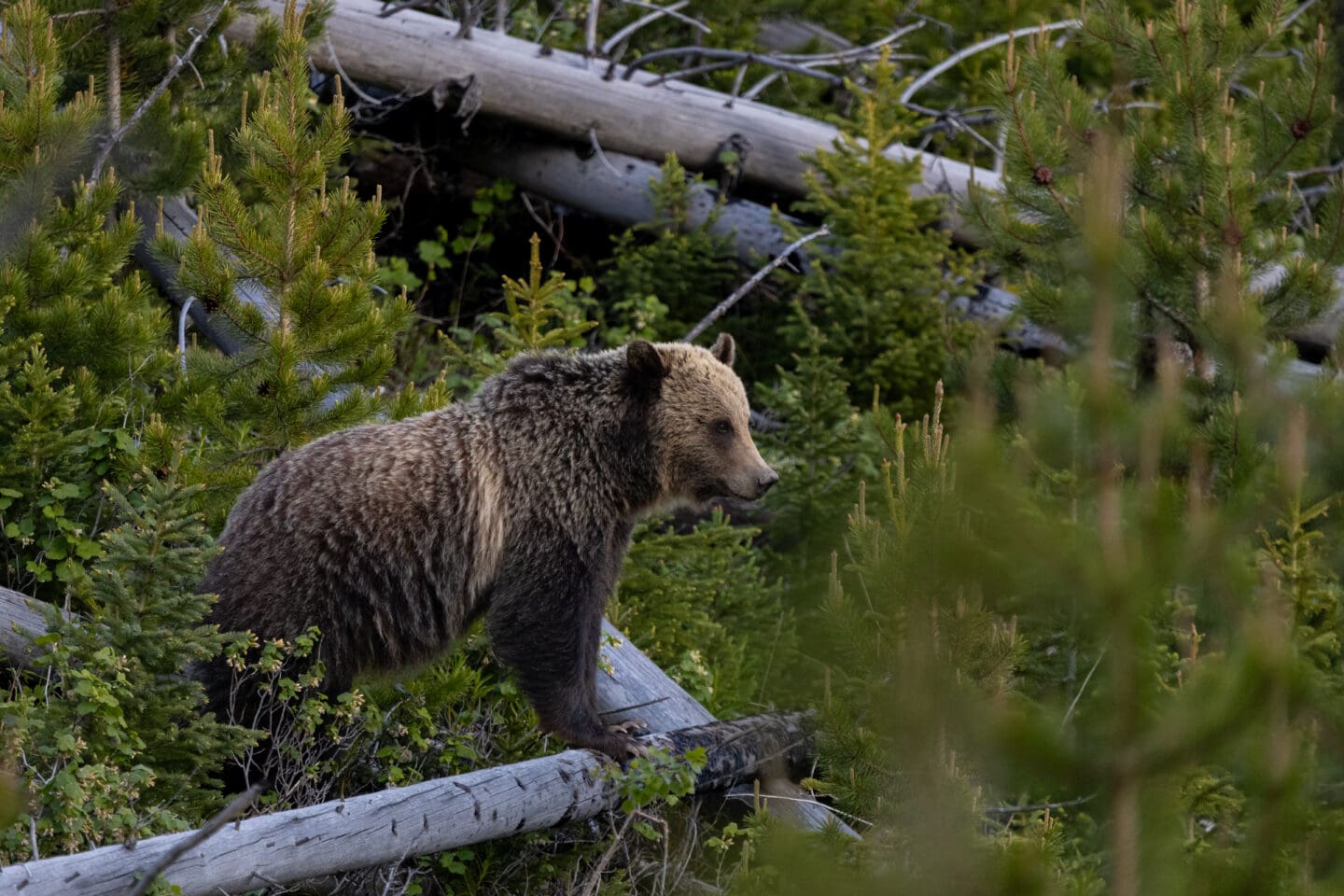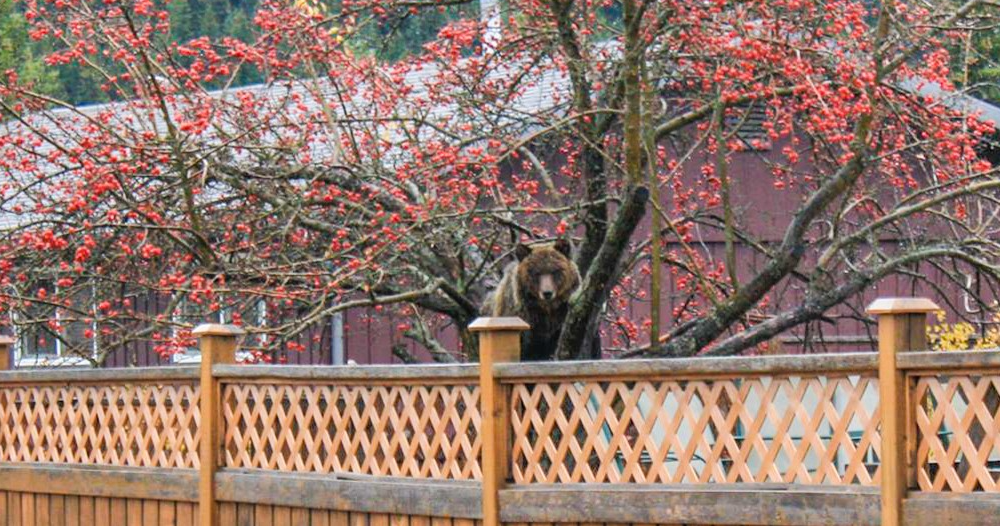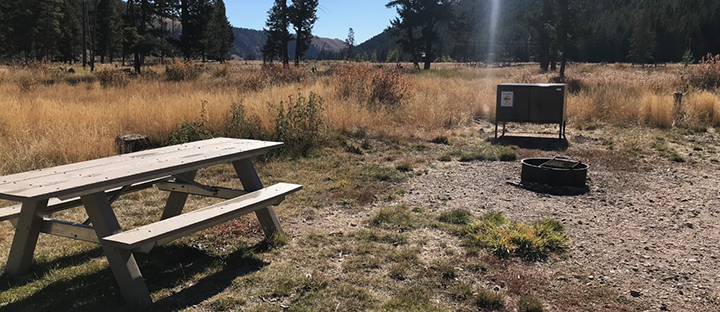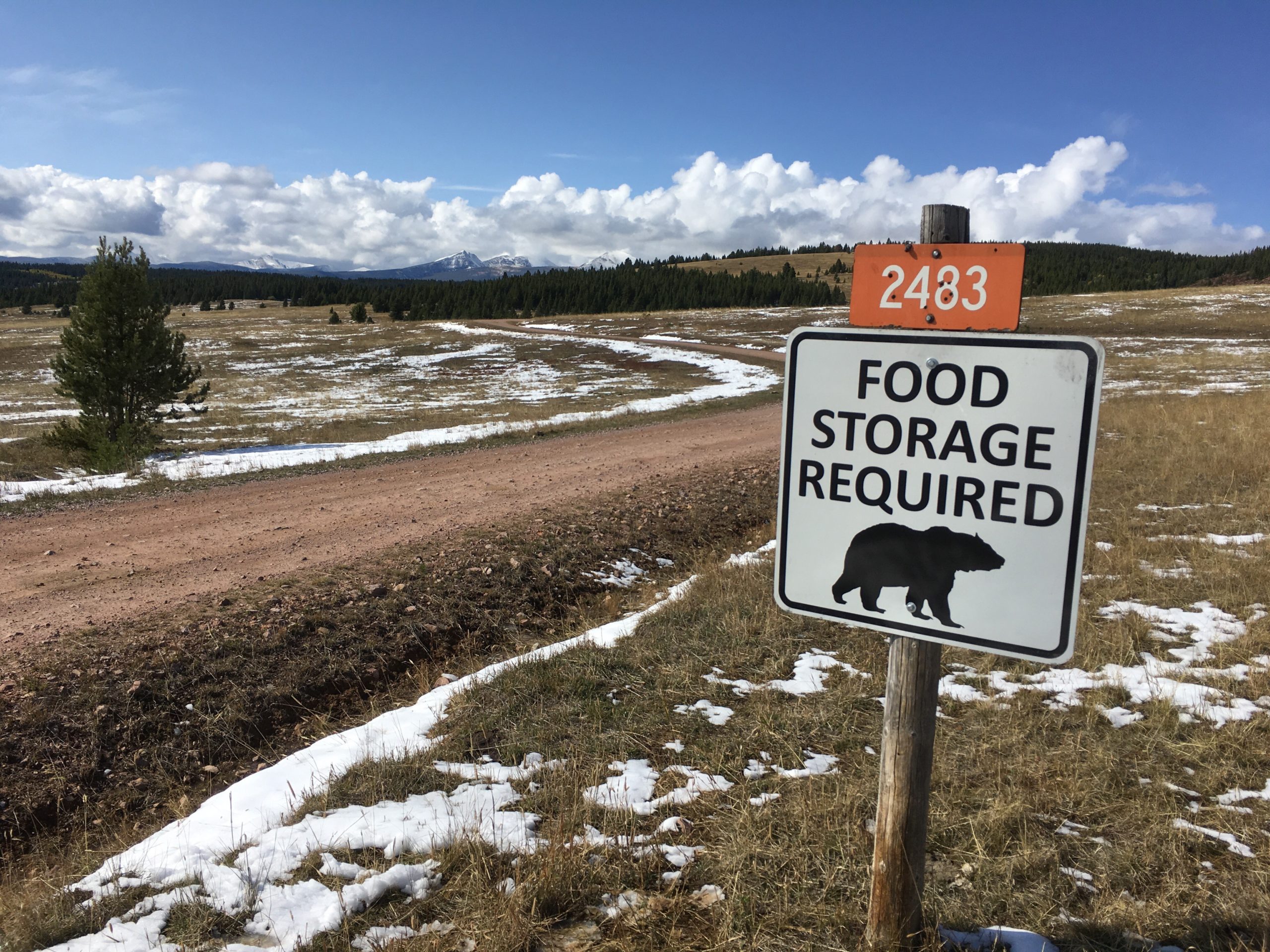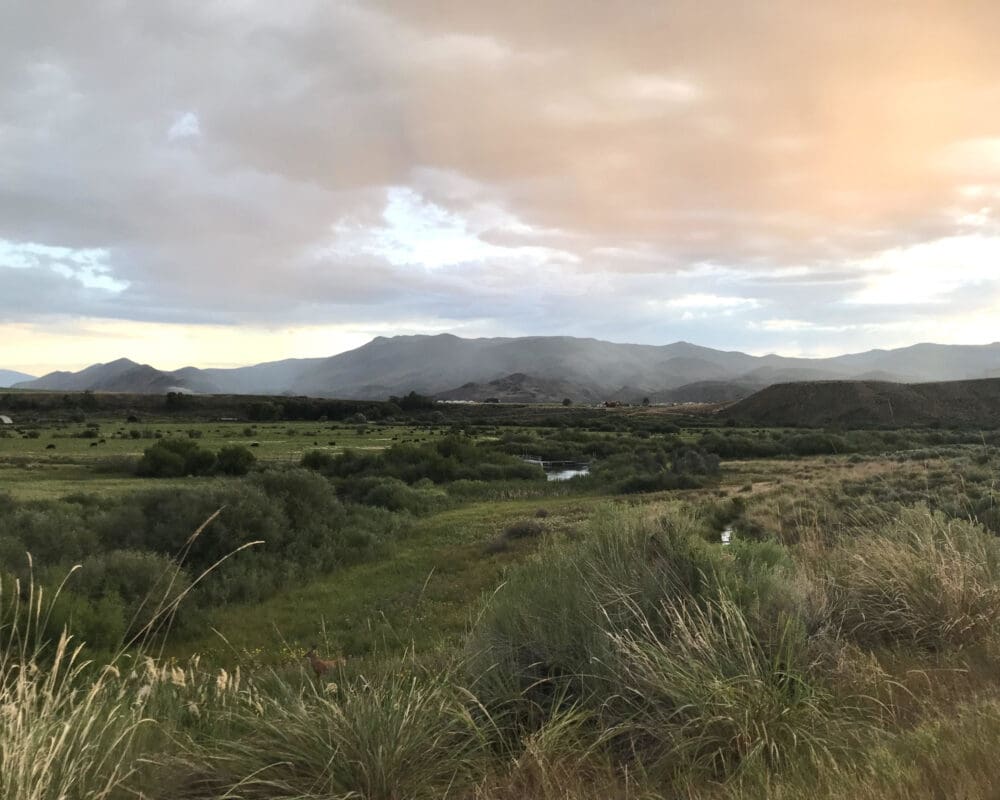Y2Y is a member of the Interagency Grizzly Bear Committee
Ensuring wildlife can move through landscapes to nearby protected habitats is key to their ability to survive and thrive.
Our efforts to connect and protect landscapes put a spotlight on grizzly bears because they act as an “umbrella” species. When their populations are healthy, generally other species in that same ecosystem are, too.
As grizzly bears return to their historic range after decades, communities who share these landscapes can learn and grow alongside this iconic species.
Y2Y engages a wide range of communities for solutions that benefit nature and people by collaborating with partners on coexistence projects across the Yellowstone to Yukon region.
In early 2024, Y2Y participated in the annual summit of the Interagency Grizzly Bear Committee (IGBC.) The IGBC helps maintain and recover grizzly bear populations and their homes in the western United States by coordinating policies, plans, management, research, and communication across different agencies.
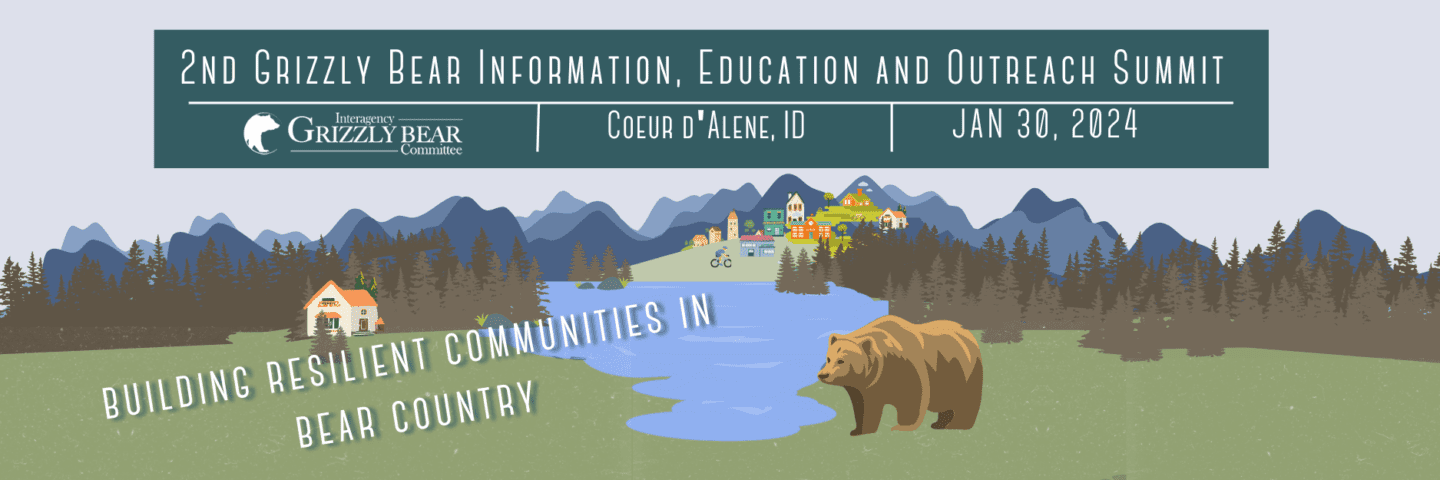
Coexistence as a common goal
The 2024 IGBC summit focused on building resilient communities in bear country. Y2Y’s communities and conservation coordinator, Hannah Rasker, sat on the event’s steering committee, contributing as a speaker and leading vital discussions.
The summit was a convergence of more than 120 individuals from diverse fields — state agency personnel, non-governmental organizations, business, academia, and more, from across Montana, Idaho, Wyoming, British Columbia and Alberta. This diversity was a testament to the multifaceted nature of conservation, emphasizing each community’s journey as unique but driven by a common goal: Coexistence.
Discussions delved into engaging communities, sharing success stories, and unpacking what it means to be “bear smart.”
Becoming bear smart, according to IGBC, involves multiple elements, including establishing committees, conducting assessments, and developing action plans. The summit provided a framework for communities to share their experiences and placed a strong emphasis on people exploring how collaborative efforts can continue in a healthy way.
Human dimensions of conservation
Coexistence efforts demand that people see bears as part of a healthy system, and not solely an element to manage. The responsibility rests with people to exist in harmony with wildlife and nature when living in ‘bear country.’
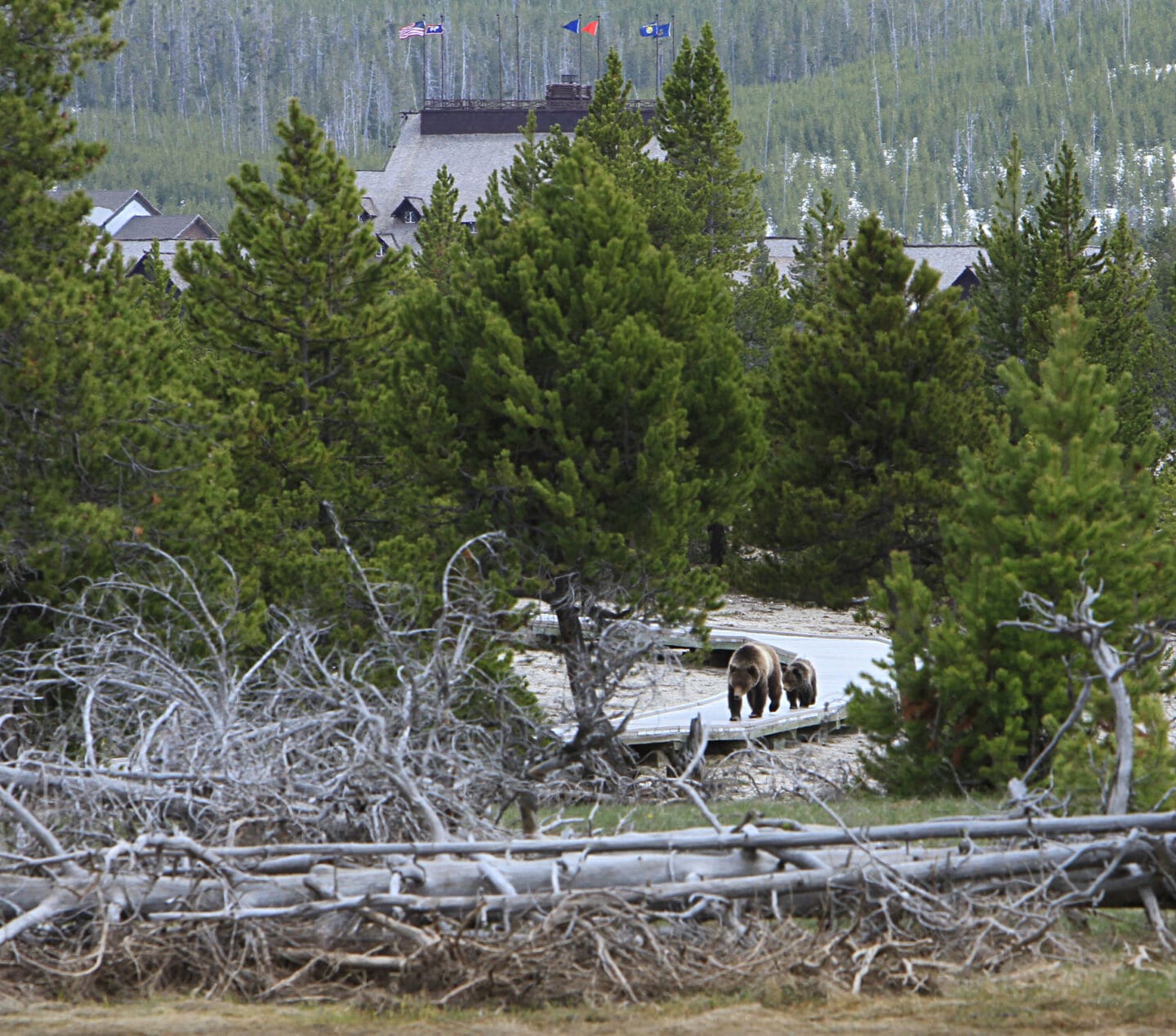
Successful conservation work has arguably more to do with managing human behavior than wildlife. Participants spent the week discussing methods for engaging communities in bear-smart initiatives and sharing resources to enhance community resilience against bear encounters.
What Y2Y is doing
Across the Yellowstone to Yukon region, we’re helping mountain communities understand, embrace, and expand practices that promote safety, coexistence and harmony between people and wildlife.
As we reflect on the summit’s outcomes, it’s clear that the path to successful grizzly bear conservation is through collaboration, community engagement, and a shared commitment to finding solutions. The IGBC summit offered a blueprint for action and ignited a collective enthusiasm for the work ahead.
Together, we can navigate the complexities of living with grizzly bears, ensuring a balanced ecosystem where people and wildlife thrive.
